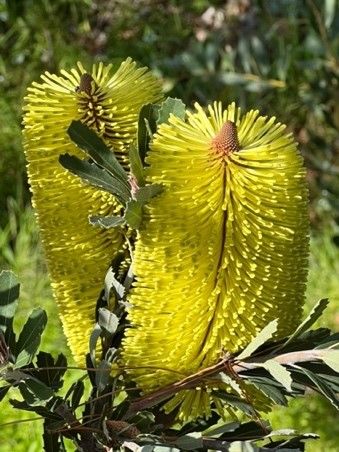Phosphorous and Native Plants

(thanks to Mary V for this interesting article)
First up let's emphasise that phosphorous is an essential element for plant growth, even for Oz natives. But too much turns it into a poison, with the actual amount dependent on species. So why is phosphorous bad for natives, and which are the most affected? The answer is remarkably simple:
· First up let's emphasise that phosphorous is an essential element for plant growth, even for Oz natives. But too much turns it into a poison, with the actual amount dependent on species. So why is phosphorous bad for natives, and which are the most affected? The answer is remarkably simple:
· Our soils are quite deficient in phosphorous, whereas the home ranges of most exotic species have a rich supply.
· As a result, our native plants are excellent scroungers of phosphorous, exotics are much weaker.
· Many natives are poisoned by the amounts desired by exotics.
Those natives that are the best scroungers are the most susceptible - these include:
· Many Proteaceaea - Banksias, Grevilleas, Hakeas,
· Many Pea Flowers - Daviesia, Hardenbergia, Kennedia,
· Around half of all Acacias, and
· Plants indigenous to sandy soils.
However, about half of Oz plants can withstand relatively high levels of phosphorous, these include:
· Most Myrtaceae - Eucalypts, Corymbia, Callistemons, Melaleucas,
· About half the Acacias, and
· Rainforest plants.
Interestingly, the most sensitive plants tend to move the phosphorous throughout their system, those that are less sensitive keep it in their roots. The former also are the most sensitive to the die back disease caused by Phytopthora cinnamomi. Regardless of their level of tolerance, it is good practice to not add anything more than a minimum of phosphorous (or none) when planting natives. Fertilisers all come with an N: P: K designation, which indicates the relative percentage proportions of Nitrogen, Phosphorous, and Potassium. If you wish to use fertiliser for natives, stick to P values of one or less. For example, a typical native fertiliser has 16: 0.8: 8. By comparison, a typical count for the superphosphate that is used widely in pastures is 0: 8.8: 0.11 - eleven times the phosphorous in native fertiliser! Free-range cattle and horse dung typically are less than 1: 1: 1. though diet could substantially increase this. They also add humus to the soil. Chicken poo tends to be more concentrated and has typical phosphorous values between 0.6 and 2.5. Blood and bone has very high phosphorous around 18. (see graph below) So cattle and horse paddocks are not a problem; chicken runs will damage a lot of natives; and application of superphosphate or blood and bone will cause substantial problems for many natives.

Article by Greg Holland (Peninsula Landcare Network and a work colleague of Mary Voice) based on common published information.
Member discussion